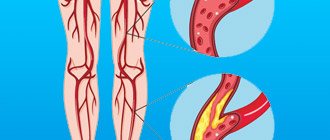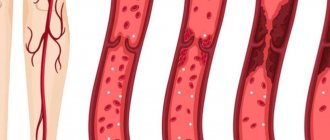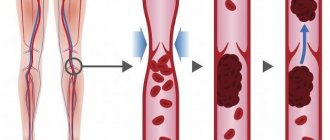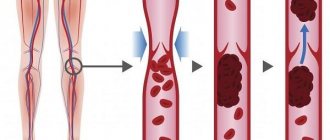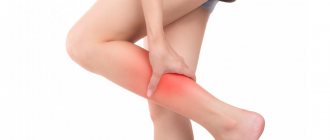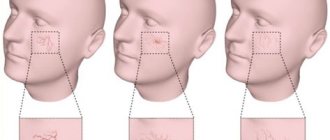Often you can meet people with an interesting facial expression: it is asymmetrical, as if distorted, emotionless, perhaps accompanied by small muscle twitches.
All these signs are united by a common name - facial neurosis. This condition can have a different nature of occurrence and is provoked by both objective reasons and factors of a psychogenic nature.
Unusual sensations
It happens that a person can feel phenomena in the face and head that are unusual for the usual state. They are called paresthesias and are manifested by the following symptoms:
- tingling;
- burning;
- "goosebumps"
- numbness;
- itching and rashes.
Often facial paresthesias have an organic basis and become a sign of the disease:
- neuritis, neuralgia of the cranial nerves;
- multiple sclerosis;
- stroke and other circulatory disorders in the brain;
- shingles;
- migraine;
- diabetes;
- epilepsy;
- hypertension.
In certain cases, unusual sensations are observed in certain parts of the face. For example, similar manifestations in the language may appear for the reasons listed above, but often have a different etiology. They are provoked by cancer of the tongue and larynx, as well as trauma by a splintered tooth or denture.
Dental procedures cause numbness and other unusual feelings, especially after tooth extraction. Another reason for their appearance may be an uncomfortable position during sleep or an unsuitable pillow. But the sensations caused by such phenomena usually pass soon.
Another group of provoking factors consists of psychogenic and neurogenic disorders.
Disorders of facial innervation
A neurotic face may develop due to damage to the nerves that innervate it. Most often these are the trigeminal and facial nerves.
The trigeminal nerve is the 5th pair of cranial nerves. It is the largest of all 12 pairs of these nerve fibers.
N. trigeminus arises symmetrically on both sides of the face and consists of 3 large branches: the ophthalmic, maxillary and mandibular nerves. These three large processes innervate a fairly large area:
- skin of the forehead and temples;
- mucous membrane of the oral and nasal cavities, sinuses;
- tongue, teeth, conjunctiva;
- muscles - chewing, floor of the mouth, palatine, tympanic membrane.
Accordingly, when it is damaged, pathological sensations arise in these elements.
Facial nerve – 7th pair of cranial nerves. Its branches surround the temporal and ocular region, the zygomatic arch, and descend to and behind the lower jaw. They innervate all facial muscles: auricular, orbicularis and zygomatic, chewing, upper lip and corners of the mouth, cheek. As well as the muscles of the lower lip and chin, around the mouth, the muscles of the nose and laughter, and the neck.
N. facialis is also paired, and is located on both sides of the face.
In 94% of cases, the damage to these nerve fibers is unilateral, and only 6% is a bilateral process.
Disruption of innervation can also be primary or secondary.
Primary is the lesion that initially involves the nerve. This could be hypothermia or strangulation.
Secondary damage develops as a consequence of other diseases.
Another reason for the development of facial neurosis is neurogenic and mental disorders. When unpleasant sensations in the face and head occur against the background of psycho-emotional arousal, shock, or as a result of stressful situations.
Non-dental factors
However, the above list is not exhaustive - in addition to the causes of loss of sensitivity of the maxillary region directly related to dentistry, there are other problematic factors.
Trigeminal neuralgia. A chronic pathology characterized by sharp exacerbations of painful sensations when mechanical triggers are activated. The main symptoms of the disease include pain during facial activity, the occurrence of involuntary tics, disruption of facial symmetry, as well as numbness of the jaw and chin.
Insufficient intake of minerals and vitamins. An unbalanced diet, with a deficiency of nutrients important for the metabolic process, leads to disruption of the functioning of nerve endings, the functionality of which directly depends on the quality of metabolism.
Development of neurosis. Psychogenic disorders are accompanied by numbness of certain areas of the face, the development of tics and involuntary muscle contractions.
Additionally, potential sources of the problem may include:
- Osteochondrosis of the cervical region, causing excessive compression of nerves and blood vessels, leading to loss of sensitivity;
- Impaired blood flow caused by dystonia or atherosclerosis;
- Hypertension, sinusitis, edema, as well as gestosis that occurs during pregnancy.
Facial nerve neurosis
Neuritis (neurosis N. Facialis) or Bell's palsy occurs due to inflammation of the nerve fiber. Reasons leading to this condition:
- pinched nerve as a result of narrowing of the channel through which it passes. This may be a congenital phenomenon or result from inflammation;
- hypothermia;
- other diseases and infections: herpes, mumps, otitis media, stroke, cancer, central nervous system infections;
- injury N. Facialis.
The onset of the disease is usually gradual. Manifested by pain in the behind-the-ear area. After a couple of days, neurological facial symptoms appear:
- smoothing of the nasolabial fold, drooping of the corner of the mouth;
- the face becomes asymmetrical with a skew towards the healthy side;
- eyelids do not droop. When you try to do this, your eye rolls;
- any attempt to show at least some emotion ends in failure, since the patient cannot move his lips, smile, or manipulate his eyebrows. Such manifestations can worsen to the point of paresis and paralysis of the facial muscles, that is, to partial or complete immobility of the affected part of the face;
- taste sensitivity decreases, salivation appears;
- the eyes are dry, but there is lacrimation when eating;
- hearing on the affected side worsens.
The severity of pathological symptoms depends on the degree and area of damage to the nerve fiber. If the disease is treated inadequately, complications may arise in the form of muscle contractures (immobility).
Since the disease is inflammatory in nature, its treatment is aimed at eliminating it. For this, the patient is prescribed hormonal anti-inflammatory drugs - glucocorticoids, as well as decongestants.
Other methods include:
- prescription of vasodilators and analgesics, B vitamins;
- anticholinesterase agents to increase nerve conduction;
- drugs that improve metabolism in nervous tissue;
- physiotherapy;
- massage, exercise therapy in the recovery stage.
And only in extreme cases, when conservative therapy is ineffective, neurosurgical intervention is resorted to.
Causes of headaches and numbness in hands
For headaches that are accompanied by numbness in the hands, it is important to make a timely diagnosis and determine the cause of these symptoms. They can be triggered by various factors, including poor circulation, low blood pressure and others. In addition, a sharp deterioration in health indicates the development of a stroke, rehabilitation for which is most effective when seeking medical help within the first two hours after the attack.
Stroke
Main article: Stroke
A stroke is an acute disruption of the blood supply to the brain. As a result of oxygen starvation, necrosis (death) of certain areas occurs, which is accompanied by disruption of nervous activity. Typical signs of a stroke are loss of consciousness, headaches, asymmetrical work of the muscles of the face and body, memory loss and deterioration of mental activity. These symptoms are individual for each patient and depend on the size and exact location of the affected area.
A stroke can occur without obvious symptoms, but cause long-term consequences and pose a danger to the patient’s life. To identify it in the early stages, there are several tests that can be performed at home:
- Face – when trying to smile, the corners of a person’s mouth rise unevenly;
- Hands - the victim will not be able to hold both hands in front of him for 10 seconds, one hand will fall down;
- Speech – speech becomes unintelligible, difficulties arise when trying to repeat a simple sentence;
- Time is a warning that if at least one symptom is present, a person’s life is in danger, and it is important to get to the hospital as quickly as possible.
Risk factors for stroke include old age, bad habits, excess weight, sedentary lifestyle, as well as chronic heart and vascular diseases. Thus, atherosclerosis is vascular damage that occurs due to the deposition of cholesterol and lipoproteins on the walls of the arteries. An unhealthy diet high in animal fats can cause deterioration in the elasticity of blood vessels and cause a stroke. Smoking and alcohol abuse are factors that also affect the intensity of blood supply to the brain. However, a stroke can be a consequence of hidden pathologies or occur suddenly in a young person with a healthy cardiovascular system.
Diseases of the neck and spine
Main article: Headache and neck pain
Neurological symptoms and headaches can also result from compression of the nerves in the cervical spine. Thus, the nerves of the cervical plexus innervate the occipital part of the head, so their damage will be accompanied by acute pain. Also in this area, nerves originate that carry impulses to the upper limbs. Headaches, numbness of the hands - these are a typical picture for a number of diseases:
- Osteochondrosis of the cervical spine (Main article: Headache with osteochondrosis of the cervical spine) is a chronic process in which there is a slow destruction of intervertebral cartilage. They become less elastic, thinner, and therefore cannot fully absorb shock during movement. This leads to insufficient mobility of the neck, pain, and a decrease in the clearance between the vertebrae. Bone segments compress blood vessels and nerves, which is accompanied by a deterioration in nerve conduction and blood circulation.
- Protrusion is a protrusion of the intervertebral disc on one side. Normally, it follows the shape of the vertebrae, but can be displaced as a result of injuries, weakness of the spinal ligaments, as well as uneven pressure on the vertebrae on both sides. Protrusions are treated with special gymnastics, massage, swimming, taking painkillers and muscle relaxants, and you may need to wear a collar. The disease progresses, and over time, if left untreated, progresses to the following stages. The last of them is intervertebral hernia, in which the dense fibrous membrane of the cartilage ruptures.
- Injuries and their consequences pose a danger to the health and life of the patient. Fractures of the vertebral bodies and processes, ruptures of ligaments lead to acute pain and require long-term rehabilitation. In the future, inactivity may persist in certain areas, increasing the risk of developing osteochondrosis and other chronic diseases.
Diseases of the cervical spine require long-term treatment. Its effectiveness will depend on regular exercise at home, as well as on compliance with other doctor’s recommendations. It is important to understand that in case of osteochondrosis, protrusions and hernias, it is necessary to monitor your posture throughout the day, dosage physical activity, and also not endure pain and attacks of numbness in the hands - with these disorders it is always worth making an appointment with a doctor for examination.
Diseases of the heart and blood vessels
Diseases of the cardiovascular system also lead to headaches, numbness in the hands and other alarming symptoms. They can occur in acute and chronic forms, be congenital and acquired. Thus, congenital heart defects, structural anomalies of valves and large vessels are accompanied by deterioration of blood circulation at any age. However, acquired disorders are more often diagnosed:
- Hypotension (See: Headache with low blood pressure) is a chronic decrease in blood pressure. Blood spreads slowly throughout the body, so the speed of blood flow in the upper extremities and head is significantly reduced. This leads to hypoxia (oxygen starvation) of tissues and deterioration of their innervation. For hypotension, complex treatment aimed at increasing blood pressure is prescribed.
- Atherosclerosis (See: Headache as a symptom of atherosclerosis) is a metabolic disorder in which deposits of cholesterol and lipoproteins appear on the inner walls of the arteries. These substances narrow the lumen of blood vessels, thereby impeding blood flow. In the future, they can form plaques and completely block the arteries, posing a danger to the patient’s life. Circulatory disorders are diagnosed using vascular ultrasound with the addition of a contrast agent. This allows you to determine the exact location of the damaged area and make a diagnosis. As treatment, a diet low in fat and cholesterol is prescribed, as well as drugs that stimulate its elimination.
- Aneurysm is a pathological expansion of a section of blood vessels (usually arteries) with the formation of a pocket filled with blood. At the same time, their walls become significantly thinner, and there is a risk of their rupture, especially with increased pressure. In the presence of an aneurysm, neurological symptoms, frequent headaches, and numbness of the hands occur. It is important for patients to monitor their well-being; according to the doctor’s decision, a planned operation is performed to restore the damaged area of the vessel.
Chronic diseases of the heart and blood vessels, if left untreated, can cause a stroke. Thus, narrowing of the lumen of the arteries and hypotension are provoking factors for the development of ischemic stroke, which occurs during prolonged hypoxia of parts of the brain. An increase in pressure to critical levels can provoke a hemorrhagic stroke - it occurs when a vessel ruptures and is accompanied by cerebral hemorrhage. According to statistics, hemorrhagic stroke is more life-threatening, and rehabilitation in this case is less effective, but the prognosis is determined individually, depending on the degree of damage and the exact area of the brain.
Trigeminal neuralgia
This is another lesion of the nerve fiber structure, which is often chronic and accompanied by periods of exacerbation and remission.
It has several causes, which are divided into idiopathic - when a nerve is pinched, and symptomatic.
The main symptom of neuralgia is paroxysmal sensations in the form of pain on the face and in the mouth.
Pain sensations have characteristic differences. They are “shooting” and resemble an electric shock; they arise in those parts that are innervated by the n.trigeminus. Having appeared once in one place, they do not change localization, but spread to other areas, each time following a clear, monotonous trajectory.
The nature of the pain is paroxysmal, lasting up to 2 minutes. At its height, a muscle tic is observed, that is, small twitching of the facial muscles. At this moment, the patient has a peculiar appearance: he seems to freeze, but does not cry, does not scream, and his face is not distorted from pain. He tries to make a minimum of movements, since any of them increases the pain. After the attack there is a period of calm.
Such a person performs the act of chewing only with the healthy side, at any time. Because of this, compaction or muscle atrophy develops in the affected area.
The symptoms of the disease are quite specific, and its diagnosis is not difficult.
Therapy for neuralgia begins with taking anticonvulsants, which form its basis. Their dose is subject to strict regulation and is prescribed according to a specific scheme. Representatives of this pharmacological group can reduce agitation and the degree of sensitivity to painful stimuli. And, therefore, reduce pain. Thanks to this, patients have the opportunity to freely eat and talk.
Physiotherapy is also used. If this treatment does not give the desired result, proceed to surgery.
Real life examples
Some famous people, whose fame sometimes trumpets all over the world, were also hostage to the pathology of the facial nerve.
Sylvester Stallone, who is known for his enchanting roles, was injured at birth. The actor's mother had a difficult birth and he had to be pulled with forceps. The result is damage to the vocal cords and paresis of the left side of the face. Because of this, Stallone had problems with speech, which became a reason for ridicule from his peers.
The actor grew up as a difficult child. But, in spite of everything, he managed to overcome his defect and achieve considerable success, although partial immobility of his face remained.
Domestic showman Dmitry Nagiyev received facial asymmetry, which was nicknamed “Nagiyev’s squint”, due to paresis of the facial nerve. The illness happened unexpectedly. As a theater student, one day he felt that his face was not moving.
He spent 1.5 months in the hospital to no avail. But one day in his room a window broke due to a draft. Fright provoked a partial return of mobility and sensitivity of the facial part, but the left part retained its immobility.
Migraine
This condition is accompanied by attacks of unbearable headache. It is also associated with disruption of the trigeminal nerve, or more precisely, with its irritation in one part of the head. This is where the pain is subsequently localized.
The onset of migraine includes several stages:
- initial;
- aura;
- painful;
- final one.
Paresthesia of the head and face appears with the development of the aura stage. In this case, the patient is bothered by a feeling of tingling and crawling, which occurs in the arm and gradually moves to the neck and head. The person’s face becomes numb and it becomes difficult for him to speak. I am concerned about dizziness and visual disturbances in the form of light flashes, floaters and a decrease in the field of vision.
Facial paresthesia is a precursor to migraine, but often the attack occurs without the aura stage.
Migraine with aura
People who suffer from migraines often experience changes in their sense of smell, vision, and hearing before an attack. Sometimes these are only short flashes - the appearance of lines before the eyes, numbness, tingling of the face. The aura appears one hour before the attack and disappears completely after the condition has returned to normal.
Triptans are used to treat migraines, but the form of the drug and its dosage must be selected by a doctor. Those who often have migraines should reconsider their diet and avoid those foods that can trigger headache attacks. This includes cheese, chocolate, wine, canned food, etc. It is also important to prevent stressful situations as much as possible.
Psychogenic causes of facial neurosis
Undoubtedly, disturbances in facial sensations quite often become a consequence of pathology of internal organs and blood vessels.
But often they are caused by psychological disorders and pathological thoughts that arise in our heads.
Facial paresthesias can be situational in nature and develop during episodic nervous excitement: as a result of quarrels, prolonged and intense screams. Such phenomena cause overstrain of the muscles, especially the cheeks and those located around the mouth. As a result, we experience facial numbness and even mild soreness.
The feeling of fear causes us to breathe quickly and shallowly, or to hold our breath. Disturbances in the respiratory rhythm can also provoke impressions that are atypical for us. A feeling arises that is characterized as a “chill running through.” Moreover, it is more concentrated at the roots of the hair. In this case they say: “chills to the marrow of the bones.” The face also becomes cold, a slight tingling appears in its area.
Such phenomena are disturbing when we are overwhelmed by strong emotions. But they accompany people suffering from mental disorders systematically.
A special type of neurotic facial manifestations is a nervous tic. It is characterized as an uncontrolled and systematic contraction of the facial muscles.
The disorder more often accompanies men. And it manifests itself with the following symptoms:
1.Motor:
- frequent blinking, winking;
- setting the lips with a tube;
- nodding head;
- constant spitting or sniffing;
- opening or upturning of the corner of the mouth;
- wrinkling of the nose.
2. Vocal:
- screaming;
- grunt;
- coughing;
- repetition of words.
There are also signs – precursors – that signal the appearance of a tic.
These include itching, facial heat and other paresthesias. Naturally, these signs are considered pathological if they occur in an inappropriate situation. It happens that only the patient himself feels them, but they are not visible to others.
But often twitching and other nervous symptoms become noticeable by other people, and they cause a lot of discomfort to the patient.
Tics can be simple, when there is only one symptom, or complex, which combines several manifestations.
The most common, main cause of tics is mental stress. It can be caused by a strong stress factor of one-stage action. Perhaps you were very scared of something, or broke up with your loved one. That is, the shock was so strong for you that your nervous system lost control.
Or, on the contrary, disorders develop as a result of prolonged monotonous exposure. Symptoms often appear due to lack of sleep and overwork.
Their duration varies. A situational nervous tic disappears a few hours or days after the cause is eliminated. In another case, it persists for years or haunts the patient throughout his life. In such a situation, in addition to eliminating the provoking factor, subsequent psychological work with the patient is required. This type of disorder is called chronic.
A nervous tic can be one of the signs of mental disorders such as neurosis, obsessive thoughts and phobias, depression.
Another group of provoking factors include:
- diseases - stroke, brain injury, infections or poisons;
- neurodegenerative diseases - Huntington's chorea. Characterized by destruction of brain tissue. Accompanied by uncoordinated, sudden movements, as well as neurological disorders of the face. Of these, the first sign is slow eye movements. Then a muscle spasm of the face occurs, which manifests itself in grotesque facial expressions - grimacing. Speech, chewing and swallowing are impaired;
- burdened heredity;
- parasitic infestations;
- eye fatigue due to prolonged eye strain;
- unbalanced diet, when the body receives little magnesium, calcium, glycine. These elements participate in the normal conduction of nerve impulses and are responsible for the coordinated functioning of the nervous system.
Dental factors
A feeling of a “stiff” jaw that spreads throughout the chin is a sign of problems inside the mouth. When paresthesia covers the gum tissue, lips and tongue, a burning and tingling sensation occurs - the best solution in such a case would be to consult a doctor for diagnostics and identification of pathology. Possible dental factors include the following.
Periodontitis is an inflammatory process localized in the area of the tooth root, the occurrence of which is facilitated by the development of pulpitis or improper placement of a filling. Characteristic signs are aching pain, aggravated by pressure, a general increase in body temperature, as well as numbness of the gums and jaws.
Prosthetics and implantation are complex procedures, during which technical errors may occur, both at the preparation stage and during the installation of a replacement structure. Incorrect installation of the implant can cause damage to the jaw nerve, the symptom of which is discomfort and loss of sensitivity in the chin area.
Use of anesthetic drugs. Anesthesia, better known among patients as “freezing,” is designed to prevent discomfort that occurs during dental procedures. As a rule, the effect lasts for 2-4 hours after the procedure, however, if tissue sensitivity has not recovered after the specified period of time, you should contact your treating specialist again.
Filling of dental canals - if composite materials get on the surface of the bone tissue, as well as poor-quality cleaning of the problem area that has become infected, an inflammatory process may develop, which negatively affects the condition of the jaw region. In critical cases, a transition to a toxic state is even possible, when the patient’s body is poisoned by the elements contained in the used material.
Mechanical damage. Another common occurrence is injuries caused by excessive force applied to the jaw. Most often, injuries are diagnosed in patients belonging to a high-risk group - athletes, car enthusiasts, stuntmen, etc. If numbness in the chin or teeth occurs after a blow or fall, it is likely that surgical intervention will be required for treatment.
Nervous tics in children
There are several types of such disorders in childhood.
Transient tic disorder begins to manifest itself during early school age. Its duration ranges from 1 month to 1 year. Motor types of tics occur more often. Mainly typical for children with developmental delays and autism.
Chronic disorder occurs before age 18. And lasts from 1 year and above. In this case, either motor or vocal tics develop. The earlier the pathological symptoms appear, the easier and faster they pass.
Tourette syndrome is a multiple tic disorder characterized by both motor and movement types. A serious disease, which, however, softens with age.
A special type of disease, which is also characterized by signs of the nervous type, is minor chorea. It develops against the background of infections caused by streptococcus: sore throat, tonsillitis, rheumatism. Accompanied by pathological changes in nervous tissue.
Along with hyperkinesis, emotional instability, irritation, restlessness and anxiety, this condition corresponds to neurotic changes in the face. They are expressed in tension and spasms of the facial muscles, which is often mistaken for grimacing. There is also a spasm of the larynx, manifested in inappropriate screams.
At school, such children, not knowing the true cause of facial hyperkinesis, and even in combination with increased activity, are reprimanded and kicked out of class. Such an attitude towards the child forces him to miss school classes and avoid going to school. Treatment for chorea minor, along with sedatives, includes antibiotics to fight infection and anti-inflammatory drugs.
A nervous tic leaves a heavier imprint on a child’s psyche than on an adult. It often causes anxiety and detachment, withdrawal, and even provokes depressive disorders. Causes sleep disturbances, speech difficulties, and learning difficulties.
Tic disorders lead to distorted self-perception and decreased self-esteem.
Parents of such children are advised not to focus the child’s attention on the problem. On the contrary, they recommend finding ways to shift attention and increase self-esteem. A special place is given to support groups for such people and communication in general.
How to get rid of nervous tics
In order to free yourself from unpleasant sensations, you must first eliminate their problem. Sometimes all it takes is a good night's sleep. In another case, you need to change the situation for a while, get out of the destructive environment.
Among the auxiliary methods used are herbal soothing teas, baths with the addition of aromatic oils, swimming, walks in the fresh air or sports: running, yoga.
Add ingredients with a high content of calcium and magnesium to your menu. These include fermented milk products, buckwheat, bran bread, red fish, eggs, and meat. Vegetables and fruits include beets, currants, dried fruits, nuts and parsley.
If these foods do not fit into your diet, consider taking appropriate vitamin supplements. Do not overuse strong tea and coffee.
And most importantly: remain optimistic and calm in any situation!
In cases where the condition worsens, psychotherapy is sought. Cognitive behavioral therapy is especially effective in helping to stop tic disorders at the stage of their precursors.
Habit reversal therapy teaches patients movements that help prevent the development of neurological facial symptoms.
Medications include anticonvulsants and muscle relaxants, Botox injections, and antidepressants.
If the above methods are ineffective in combating nervous tics, they turn to deep brain stimulation. A device is installed in the GM that controls electrical impulses.
How to remove teak yourself
If a nervous facial tic is situational and is not too intense, but at the same time obsessive, you can try to get rid of it using physical methods.
One way is to try to disrupt the pathological muscle rhythm by overexerting it. For example, if your eye twitches, try to close your eyes tightly.
It is possible to calm an overexcited muscle through a light massage. Or apply cold to it. The temperature difference will also help. Wash your face alternately with cold and warm water.
When to see a doctor
To restore sensitivity and get rid of numbness in the chin or jaw, it is recommended to visit the dentist at the first signs of discomfort. Comprehensive diagnostics makes it possible to establish the root cause of the pathology and begin targeted therapy that helps restore the natural state of tissues. To prevent paresthesia, it is also recommended to periodically do short facial exercises that stimulate internal processes and restore the functionality of the facial muscles.
Dermatillomania
Neurosis of the face and scalp can manifest itself in a behavioral disorder such as dermatillomania.
Its main manifestation is scratching the skin of the face and head, not because of itching, but because of dissatisfaction with its appearance. This also includes an obsessive zeal to squeeze out pimples, scratch off scabs, and pull out hair. Self-injurious actions cause a short-term feeling of pleasure, followed by feelings of shame, frustration, and dissatisfaction.
The face of such patients is covered with scars and scars due to constant trauma to the skin. This process is uncontrollable and can occur at any time of the day. But most often traumatic actions are carried out in front of a mirror.
Symptoms of the disorder also include the habit of biting the lips and mucous membranes of the cheeks. Patients are not deterred by the prospect of redness, bleeding, and scarring of the skin. They repeat the ritual day after day. It lasts from a few minutes to an hour.
Such actions can be provoked by feelings of fear, anxiety, and close examination of one’s skin because there is nothing to do.
Dermatillomania has been described as a state of addiction. It begins with concentrating on what the patient thinks is a skin defect. Gradually, attention is increasingly focused on this detail. A person begins to think that he is sick with something serious. This provokes irritability and nervousness in him, leading to obsessive actions.
The root cause of the disease is rooted in the psychological state of a person and lies in self-dissatisfaction, anger, feelings of shame and malice. Traumatic rituals are a way of punishment, self-flagellation.
Treatment of this pathology requires the intervention of a psychotherapist and a dermatologist.
The main method of treating addiction is psychotherapy, in particular cognitive behavioral therapy.
Yoga, physical exercise, relaxation procedures, as well as any hobby that absorbs a person and helps redirect attention will help reduce anxiety, distract and relax.
The help of a dermatologist is necessary to eliminate skin lesions in order to prevent infection and reduce the degree of dermatological defect.
Mental disorders
Why the tip of the tongue goes numb, and the causes of numbness in the lips may be associated with mental disorders. This symptom is combined with increased heartbeat, a feeling of lack of air, which makes the person feel anxious. If the tip of the tongue goes numb, what does this mean, doctors usually diagnose it by determining organic pathology. If no such cause of numbness of the tip of the tongue and other symptoms are found, then the patient is diagnosed with “ vegetative-vascular dystonia ”. However, in fact, this condition is not a disease, but only a set of symptoms that are associated with psychological problems. Very often, vegetative-vascular dystonia is a sign of a depressive state or a state of increased anxiety. That is why a psychotherapist should treat such a symptom.
If we are talking about autonomic disorders of a psychogenic nature, the following symptoms may appear:
- tremor;
- rapid heartbeat;
- the face, tip of the tongue, palate in the mouth, limbs go numb;
- increased sweating ;
- causeless discomfort in various organs;
- strong concern for health on the part of the patient.
In this case, the doctor can determine why the tip of a person’s tongue is numb and make the correct diagnosis by first ruling out all possible diseases with similar symptoms. For the purpose of treatment, psychotherapy sessions and antidepressants are prescribed.
Neuroses
This is a large group of diseases, manifested primarily in psycho-emotional disorders, as well as malfunctions of the autonomic nervous system. They do not cause pathological disorders of the nervous tissue, but have a significant impact on the human psyche.
There are several types of disorders in which the symptoms are visible.
Muscular neurosis is manifested by muscle tension, spasm and convulsive twitching. Neurosis of the facial muscles makes itself felt with the following manifestations:
- nervous tic;
- lip tension, clenching;
- convulsive contraction, the face seemed to move;
- tingling, burning sensation;
- muscle pain;
- Tension of the neck muscles is manifested by a feeling of lack of air, a lump in the throat.
When we find ourselves in a stressful situation, our body produces stress hormones. They, among many other reactions, cause muscle tension. Now imagine, if we are exposed to chronic stress, what happens to our muscles, and specifically to the muscles of the face. Being systematically in hypertonicity, they overexert themselves. This is what causes their nervous twitching, spasms, and convulsions.
Another type of neurosis is skin. It causes paresthesias in the facial skin of the following type:
- severe itching, burning in the facial and scalp without clear localization;
- sensation as if something were touching the face. And it's terribly annoying;
- the appearance of red spots on the face and neck. Possible rash.
The causes of such phenomena are nervous and mental overstrain, chronic stress, sleep disturbances, as well as disruptions in hormonal regulation.
With neuroses associated with disruption of the autonomic nervous system, various manifestations may also occur. Malfunctions in the functioning of the vascular network occur, and a vascular neurotic disorder develops.
Vascular neurosis of the face is manifested by flaking and dryness, a feeling of tightness of the skin. She becomes pale, sometimes cyanotic, and her sensitivity worsens. In addition, sneezing appears, the nose is stuffy, the eyes become red and watery, the skin itches and itches. This indicates the development of vegetative-allergic reactions.
Diagnostic methods
In case of headaches, numbness of the fingers or upper extremities, a completely timely diagnosis is very important - it can improve prognoses in the event of a stroke and other dangerous lesions. Depending on the results of the examination and simple diagnostic tests, the following diagnostic methods may be required:
- radiography of the cervical and thoracic spine - necessary if osteochondrosis is suspected;
- MRI of the brain is a specific technique with a high level of visualization, which is prescribed for the diagnosis of stroke, aneurysms, if neoplasms and other pathologies are suspected;
- electroencephalography – allows you to assess the activity of the nervous system;
- duplex scanning, Dopplerography - examination of the vascular system to identify blood clots, vascular obstruction, and aneurysms.
At the Clinical Brain Institute you can undergo comprehensive diagnostics in a short time. Our center has modern, precise equipment for examining the spine, blood vessels, brain and internal organs. Its use allows you to quickly assess the patient’s condition and select the most effective treatment, which will affect not only the symptoms, but also the causes of poor health.

